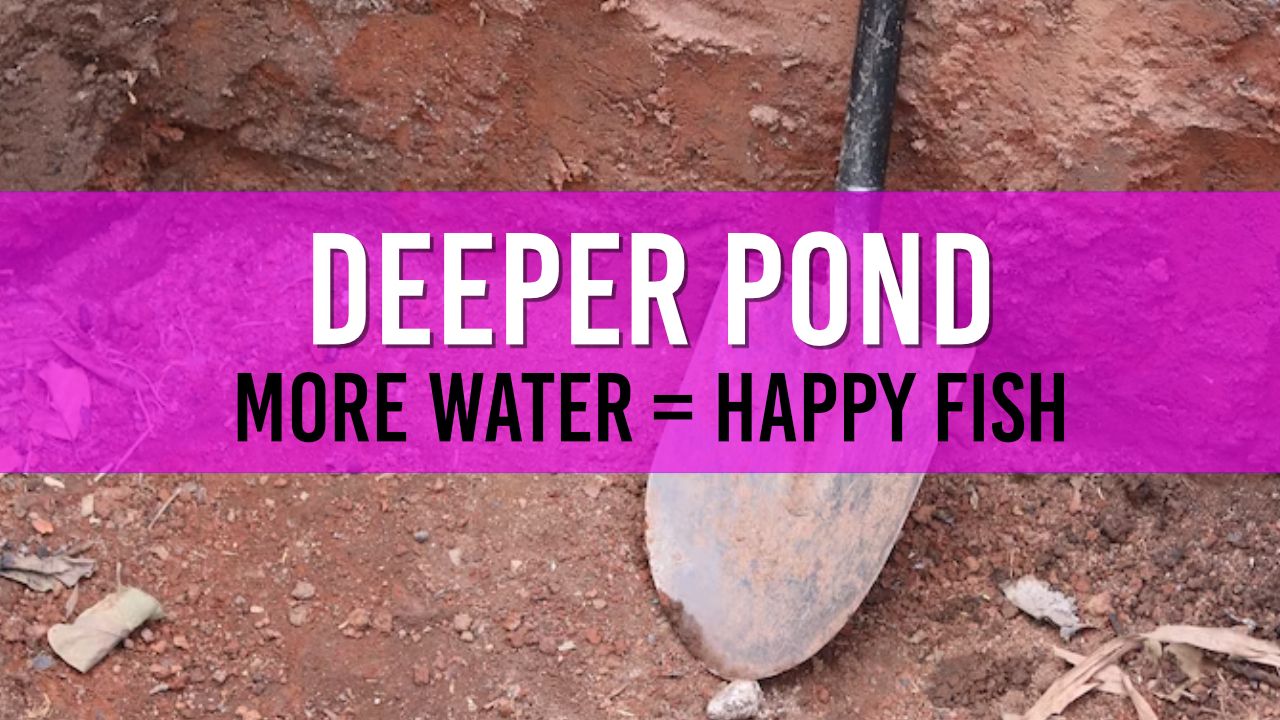How can I make my pond deeper?
To make your pond deeper you must first drain your existing pond. Once drained you can then dig out more ground and lay a new liner. Once laid, refill your pond and introduce your fish and plants.

Table of Contents
There may be various reasons why you'd want to make your pond deeper, such as creating a more comfortable environment for your fish or improving the overall aesthetic of your garden. Regardless of the reason, there are several methods to deepen your pond. In this article, I'll discuss some of the key steps to take when planning and executing a pond deepening project.
Assess Your Current Pond
Before making any changes, it's important to evaluate your current pond, its size, shape, and construction. Consider factors like the type of pond liner used, whether it's a preformed pond or a flexible liner, and the surrounding landscape. For more information on pond liners, see Should I have a light or dark coloured pond liner?
Plan the New Depth
Once you've assessed your current pond, you'll need to decide how deep you want the new pond to be. This decision will depend on factors such as the type of fish you have, the pond's purpose (e.g., a wildlife pond or koi pond), and local regulations. For more information on pond depth requirements, see Does a wildlife pond need a pump and filtration?
Drain the Pond
Before you can begin deepening your pond, you'll need to drain it first. Be sure to provide a temporary holding area for your fish and aquatic plants during this process. For more information on how to safely drain your pond, see How do I clean my koi pond filter sponges?
Excavate the Pond
With the pond drained and fish and plants safely relocated, you can start excavating the pond to your desired depth. Make sure to take all necessary safety precautions during this process, such as wearing appropriate protective gear and using suitable tools.
Preformed Ponds
If you have a preformed pond, you'll need to remove the current pond shell and dig deeper to accommodate the new, larger shell. For guidance on installing a new preformed pond, see Do I need a concrete base for a raised pond?
Flexible Liner Ponds
For flexible liner ponds, you'll need to carefully remove the existing liner and underlay, and then dig to the desired depth. Remember to create shelves for plants and to maintain a gradual slope for easy access for wildlife. For more information on pond liners, see Should I double layer my pond liner?
Install a New Pond Liner
Once the excavation is complete, it's time to install a new pond liner appropriate for the new depth. Ensure the pond liner is large enough to cover the entire pond, including any shelves and slopes. For more information on choosing and installing a pond liner, see My pond liner has folds, is this bad?
Refill the Pond and Reintroduce Fish and Plants
With the new liner in place, you can refill the pond with water. Remember to treat the water, if necessary, to ensure a healthy environment for your fish and plants. Once the pond is refilled, you can reintroduce your fish and aquatic plants, taking care to acclimate them to their new environment properly. For more information on acclimating fish to their new environment, see Can I put my indoor cold water fish into my outside pond?
Optimize the Pond's Ecosystem
A deeper pond may require adjustments to your existing pond equipment, such as upgrading your pond pump or adding aeration to ensure proper oxygen levels. For more information on selecting the right pond pump, see Which pond pump do I need for my pond? and for tips on adding oxygen to your pond, see How to add more oxygen to my pond?
It's also important to maintain the water quality in your new, deeper pond. This may involve adjusting your pond filter system or adding a UV filter to control algae growth. For more information on UV filters, see Do I need a UV lamp for my pond? and How often do I need to replace my UV bulb in my pond?
Monitor and Adjust as Needed
After deepening your pond, it's essential to monitor the health of your fish, plants, and the overall pond ecosystem. Keep an eye out for any signs of stress or imbalance and take appropriate action if needed. For more information on pond health, see Why are my pond fish not eating?
Conclusion
In conclusion, deepening your pond is a manageable project with careful planning and execution. By considering the needs of your fish and plants, as well as the overall pond ecosystem, you can create a beautiful and thriving garden pond that you'll enjoy for years to come.

